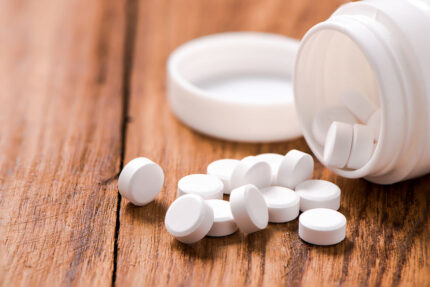Few sectors can withstand the economic headwinds that come during periods of economic upheaval, including recession and inflation. Recession stocks are sought out by retail and institutional investors alike.
But one sector that can thrive is food—people will always need to eat. Another area largely insulated from market turmoil is the pharmaceutical sector. Prescription drugs are not luxuries that many people can easily do away with.

Few sectors can withstand the economic headwinds that come during periods of economic upheaval, including recession and inflation. Recession stocks are sought out by retail and institutional investors alike.
But one sector that can thrive is food—people will always need to eat. Another area largely insulated from market turmoil is the pharmaceutical sector. Prescription drugs are not luxuries that many people can easily do away with.
The tirzepatide obesity data could support a best-in-class drug in both diabetes and obesity…the strong obesity data suggests a major new label expansion in 2023 or 2024. With roughly 20% weight loss at the higher 10 mg and 15 mg doses, tirzepatide looks potentially better than Novo Nordisk’s Wegovy (17%-18% weight loss). The strong efficacy combined with a solid safety profile should support improved payer coverage in obesity.
However, keep in mind that the FDA has yet to approve tirzepatide for treatment of obesity—so it may be years before Lilly actually gets revenues for the drug from treating obesity.
Another promising drug in Lilly’s pipeline is donanemab, an Alzheimer’s treatment that was granted Breakthrough Therapy status by the FDA last year after preliminary evidence suggested it offers substantial improvements over other available treatments.
The Breakthrough designation by the FDA means donanemab is eligible for an expedited review process by the regulator. Though this sounds like good news, the outlook is more complex.
Donanemab is one of several drugs in development that aims to slow the progression of Alzheimer’s disease by destroying clumps of amyloid proteins in the brain. According to the amyloid hypothesis—which, it should be noted, is not universally accepted by scientists—flaws in the processes governing these proteins lead to the development of the disease.
Last year, a Phase II trial demonstrated that donanemab could clear away amyloid plaques…but whether this significantly slows cognitive decline is another matter. Analysis of the trial showed that the cognitive capabilities of participants declined more slowly than those who received a placebo, if only by a modest amount. Investors will have to wait for the release of phase 3 trial data in the second quarter of next year for more information.
Lilly’s Outlook
Even if these two drugs don’t work out as well as expected—only one in 10 drug candidates makes it through trials and gains regulatory approval to the market—Lilly is still in good shape, based on its existing products and near-term revenue prospects.
The company’s core strength lies in its diabetes portfolio – with its two highest-selling drugs, Trulicity (dulaglutide) and Humalog (insulin lispro injection), targeting the disease. The former boasted global sales of $6.5 billion in 2021. While generic competitors for Trulicity could reach the market by 2027, Lilly’s new Mounjaro (tirzepatide) is poised to make up for lost revenue, even in the event that it isn’t approved to treat obesity.
Lilly’s highly promising drug pipeline means its shares look expensive when compared to its peers—LLY is priced at 34 times next year’s earnings forecasts, much higher than Pfizer (PFE) at 9 times or Bristol-Myers Squibb (BMY) at 10 times.
Bullish proponents of LLY argue the premium price reflects the company’s commitment to research. Consensus projections indicate that earnings will rapidly ascend to $14.60 a share by 2025.
And indeed, the company tends to spend low to mid-20% of its sales on financing the development efforts of new drugs, much higher than the high-teens industry average commitment to research.
As Morningstar analysts wrote: “Eli Lilly’s innovative culture and strong financial commitment to developing the next generation of drugs set the company apart from its peers and fuel its long-term growth.”
I tend to agree with the bulls: Lilly’s near-term cash flow sets the company apart from its peers. Add to that the fact that Lilly is not under much of a looming patent threat, plus its excellent drug development track record, and Eli Lilly stands out as a beacon of stability in the current turbulent market climate. Its stock is up 38% over the past year and 20% year-to-date. It’s a buy in the $310 to $330 per share range.





